When you pick up a prescription, you might not think about how the drug got to the shelf. But behind every generic pill is a complex battle between companies, patents, and pricing - and it directly affects what you pay. Two types of generics dominate the market: authorized generics and first-to-file generics. They look the same, work the same, but their impact on price is wildly different.
What exactly is an authorized generic?
An authorized generic is the exact same drug as the brand-name version, made by the same company, in the same factory, with the same ingredients and packaging - except it doesn’t carry the brand name. It’s sold under a generic label, often at a lower price. The brand-name manufacturer licenses it to a distributor or sells it directly to pharmacies. Think of it as the brand dropping its logo but keeping everything else the same. These aren’t knockoffs. They’re the real thing, just without the marketing. For example, if you take Lipitor (atorvastatin), an authorized generic would be identical in every way - same pill, same manufacturer, same quality control - but labeled simply as "atorvastatin calcium." It enters the market even before the first traditional generic is approved, sometimes as part of a legal settlement between the brand and a generic company.What is a first-to-file generic?
The first-to-file generic is the first generic company to submit an Abbreviated New Drug Application (ANDA) to the FDA and challenge the brand’s patent. Under the Hatch-Waxman Act of 1984, this company gets 180 days of exclusive rights to sell its version before any other generic can enter. That’s a huge incentive. During those six months, they’re the only game in town - and they can charge a premium. That exclusivity period isn’t just a reward. It’s a financial lifeline. For big drugs, those 180 days can mean hundreds of millions in revenue. But here’s the catch: that exclusivity doesn’t stop an authorized generic from entering. And when it does, everything changes.Price difference: Authorized generics slash costs faster
Here’s where it gets real. If you’re paying out of pocket or your insurance is covering the cost, the presence of an authorized generic during the first-to-file’s exclusivity period makes a huge difference. According to the Federal Trade Commission (FTC), when only the first-to-file generic is on the market, the average retail price is about 14% below the brand-name price. That’s good - but not great. Now, add an authorized generic into the mix, and that discount jumps to 18%. That’s a 4 percentage point drop in price just from adding one more competitor. The impact is even sharper for pharmacies. When only one generic is available, pharmacies pay about 20% less than the brand price to buy the drug. But when an authorized generic enters, that cost drops to 27% below brand. That’s a 7-point swing - meaning pharmacies can pass more savings to you, or keep more profit. The FTC’s 2013 analysis found that during the 180-day exclusivity window, authorized generic competition lowers retail prices by 4-8% and wholesale prices by 7-14% compared to markets with no authorized generic. In other words, if you’re buying a generic without an authorized generic competing, you’re paying more than you should be.Why does this happen?
It’s simple economics: more competition = lower prices. When the first-to-file generic has no competition, they can hold prices high. But when an authorized generic shows up - made by the very same company that made the brand - it forces the first-filer to drop prices fast. They can’t afford to lose market share. So they cut prices to stay relevant. And here’s the twist: the authorized generic doesn’t just compete - it crushes the first-filer’s profits. The FTC found that authorized generic entry reduces the first-filer’s revenue by 40 to 52% during those 180 days. That’s not a small dent. It’s a financial earthquake. But here’s what’s surprising: that doesn’t scare off other generic companies from filing patent challenges. Despite the revenue loss, the number of patent lawsuits hasn’t dropped. Generic manufacturers still see the 180-day exclusivity as worth the risk. The FTC confirmed this in 2013: "There’s no measurable reduction in patent challenges." The incentive is still strong enough.
Long-term savings: More generics = bigger discounts
The real magic happens after the exclusivity period ends. Once more generic companies enter - and they do, often in waves - prices keep falling. The FDA analyzed drugs from 2015 to 2017. With just one generic (the first-to-file), the average manufacturer price was 39% below the brand. But with two competitors - the first-to-file plus an authorized generic - prices dropped to 54% below brand. With four competitors? 79% off. And when six or more generics are selling the same drug? Prices drop over 95% compared to the original brand. That’s not theoretical. That’s what happens on the ground. A 2022 report from U.S. Pharmacist found that generics typically cost 80-85% less than their brand-name equivalents. A 2023 Health Affairs study confirmed generics average about 70% cheaper within five years of first entry. So while the first-to-file generic might start high, the market doesn’t stop there. Authorized generics kickstart the race. And once the race is on, prices plummet.Who benefits? You do.
The FTC says it plainly: "Consumers benefit and the healthcare system saves money during the 180-day exclusivity period when an AG enters the market." That’s not marketing speak. That’s data. You pay less at the pharmacy. Insurance plans pay less. Medicaid and Medicare pay less. Even pharmacies make more profit per prescription when authorized generics are present - meaning they’re more likely to stock and recommend generics over brand names. And here’s another win: authorized generics aren’t less aggressive competitors. Some worried they’d be "soft" because they’re made by the brand company. The FTC found no evidence of that. Their prices are just as low as other generics. They compete hard.What about the brand companies?
They’re not losing money - they’re just changing how they make it. By launching an authorized generic, they capture a chunk of the generic market while still keeping control. It’s a smart move: they get revenue from generics without the cost of developing a new drug. And they prevent the first-filer from monopolizing the market for too long. Some critics say this is a way for brand companies to delay real competition. But the data doesn’t back that up. The FTC found no evidence that authorized generics reduce the number of patent challenges. Generic companies still file ANDAs. They still sue. They still win.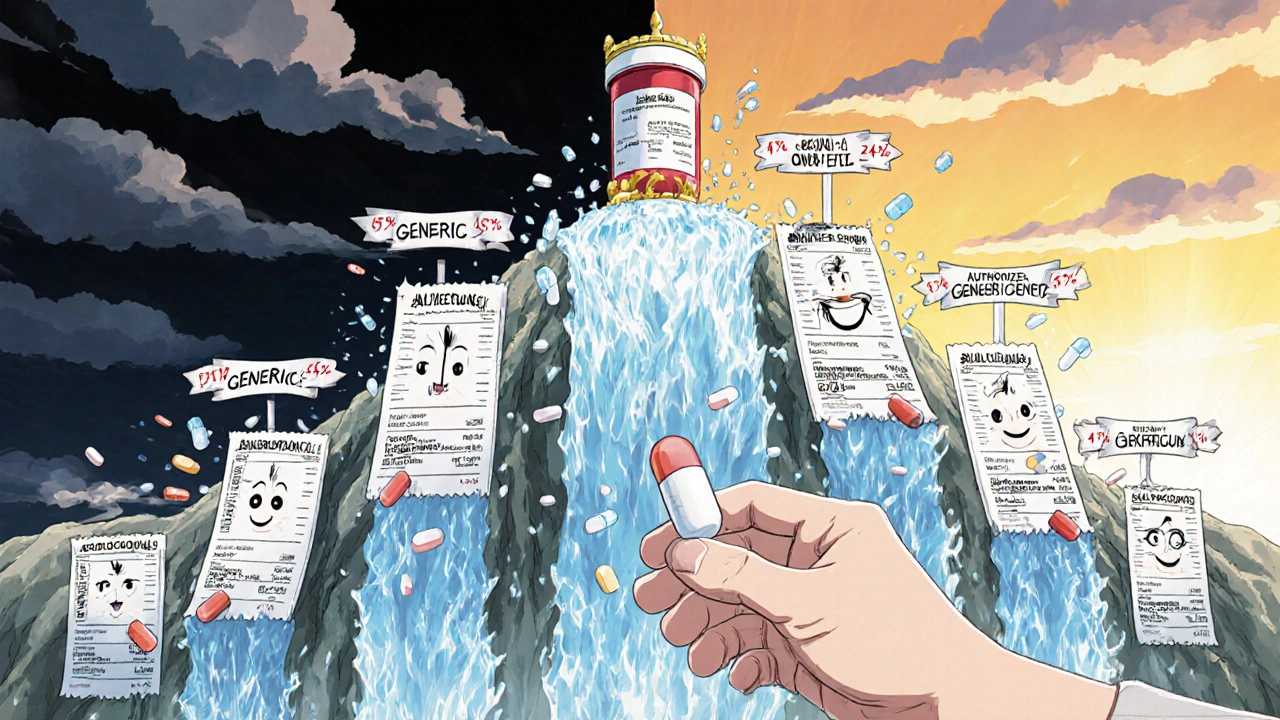
What about newer versions of the drug?
There’s one curveball: brand companies sometimes release a slightly modified version - like an extended-release tablet or a new formulation - right after a generic hits the market. This can shrink the market for the original generic by up to 29% in the first year, according to ASPE research in 2021. It’s not illegal. It’s called "product hopping." And it’s a way to keep patients on the brand version. But if you’re on the original drug, and an authorized generic is available, you’re still getting the same medicine at a fraction of the cost.What should you do?
If you’re taking a generic drug, ask your pharmacist: "Is there an authorized generic available?" It’s not always obvious. Some pharmacies stock it automatically. Others don’t. But if you ask, they can usually get it. Don’t assume all generics are the same. The one with the brand’s name on the bottle might cost more than the one labeled "authorized generic" - even if they’re identical. And if your insurance has a tiered system, make sure the authorized generic is covered at the lowest copay. Sometimes, the first-to-file generic is on tier 1, but the authorized generic is on tier 2. That’s a mistake. Push back. Ask for a formulary exception.Bottom line
Authorized generics aren’t just another generic. They’re a game-changer. They drive down prices faster, protect consumers from monopolistic pricing, and keep the system honest. First-to-file generics are important - they’re the spark that starts competition. But authorized generics are the fuel that keeps prices falling. The bottom line? When you see "authorized generic" on your prescription label, you’re getting the best deal possible. It’s the same drug. Same quality. Same manufacturer. But it costs less. And that’s not just good for your wallet - it’s good for the whole system.Are authorized generics the same as brand-name drugs?
Yes. Authorized generics are identical to the brand-name drug in active ingredients, dosage, strength, safety, and effectiveness. They’re made in the same factory by the same company - just without the brand name or marketing. The only difference is the label.
Why are authorized generics cheaper than the brand?
Because they don’t carry the marketing, advertising, and brand-building costs that the original drug does. The manufacturer saves money on promotion and passes those savings to pharmacies and consumers. They also face competition from other generics, which forces prices down.
Can an authorized generic enter the market before the first-to-file generic?
Yes. Authorized generics don’t need FDA approval through the ANDA process. They’re marketed under the brand’s original New Drug Application (NDA), so they can launch anytime - even before the first generic is approved. That’s why they often appear during the 180-day exclusivity period.
Do authorized generics reduce innovation in generic drugs?
No. The FTC studied this extensively and found no measurable drop in the number of patent challenges filed by generic companies. Even with authorized generics cutting into first-filer profits, generic manufacturers still pursue ANDAs aggressively because the financial reward for exclusivity remains high.
How do I know if my generic is an authorized generic?
Ask your pharmacist. Authorized generics often list the brand name on the label, like "Atorvastatin Calcium (Lipitor)" or have a note saying "Authorized Generic." Some packaging includes the brand company’s name as the manufacturer. You can also check the FDA’s Orange Book or ask your doctor to specify it on the prescription.
Are authorized generics covered by insurance the same way as other generics?
They should be. Most insurance plans treat authorized generics the same as other generics - at the lowest copay tier. But sometimes they’re misclassified. Always check your plan’s formulary. If you’re paying more for an authorized generic than a regular generic, ask your insurer to reclassify it. It’s the same drug.
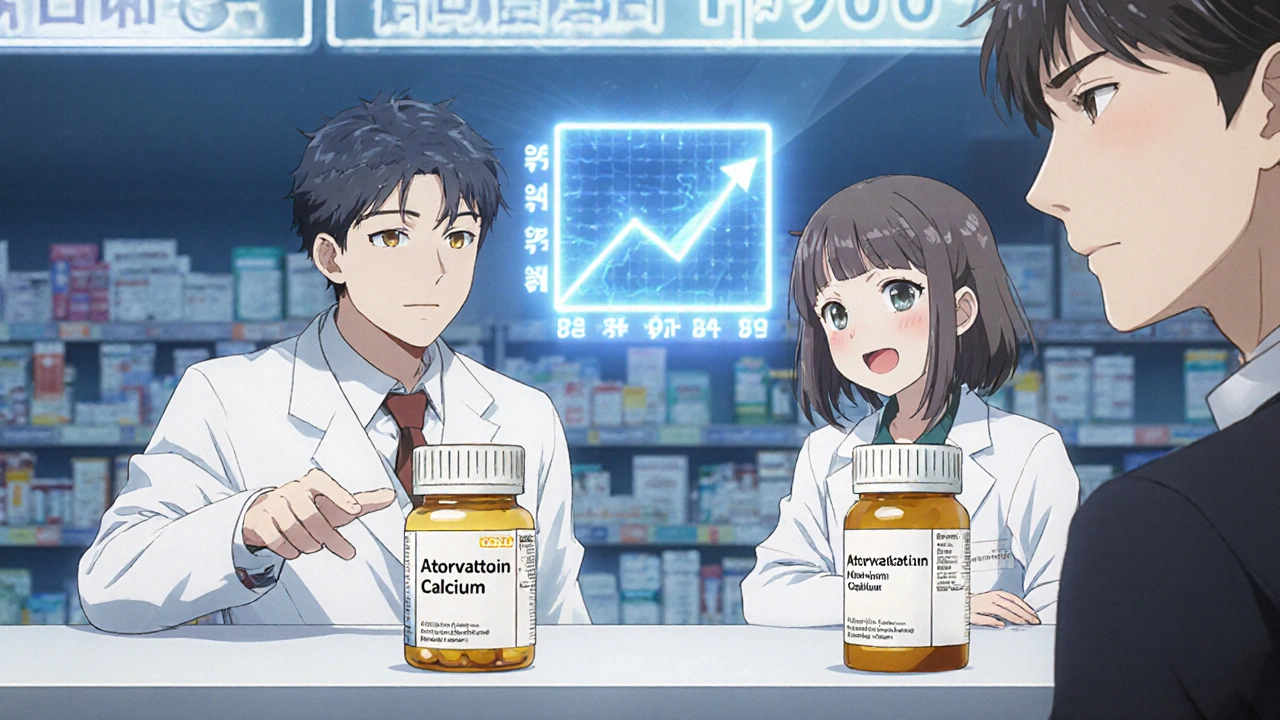
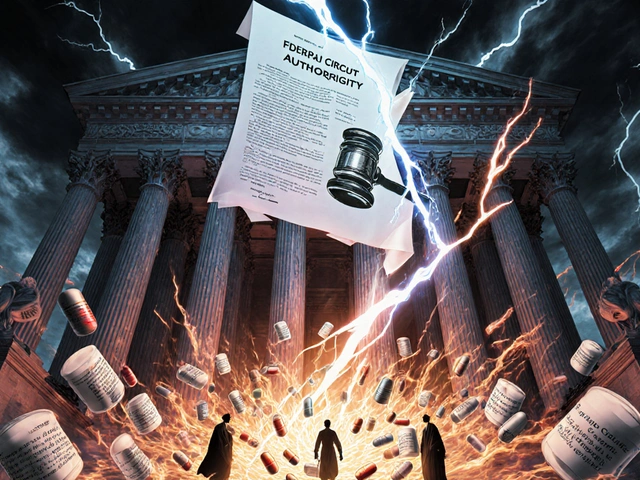
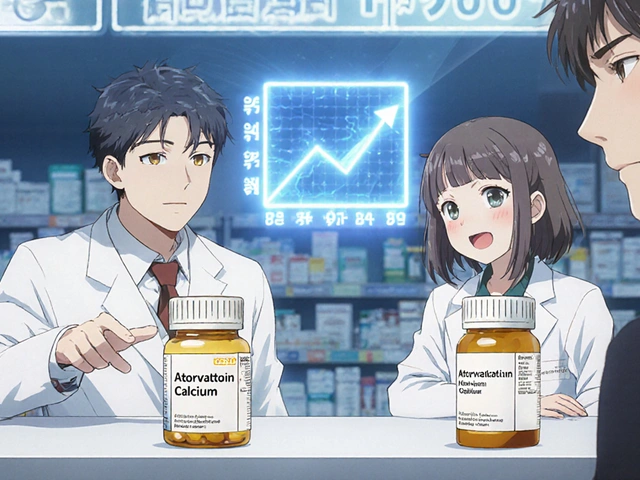
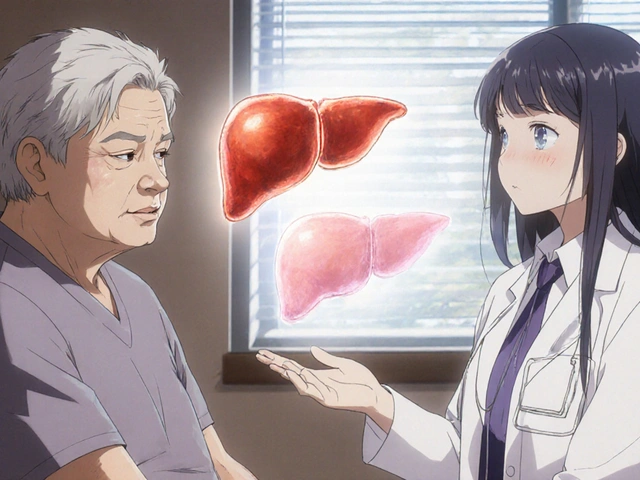



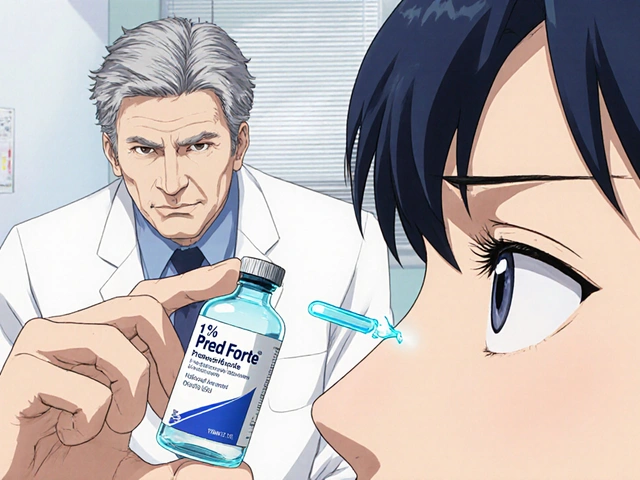

Nathan Hsu November 14, 2025
Wow, this is such an eye-opener! I had no idea authorized generics were literally the same pill, just without the brand name. In India, we often assume generics are inferior-this changes everything. I’m going to ask my pharmacist next time I refill my blood pressure meds. Also, why does the label say 'Lipitor' on the authorized version? That’s confusing as hell. Seriously, someone needs to make a public service ad about this.
Ashley Durance November 14, 2025
Let’s be clear: the FTC data is cherry-picked. The 180-day exclusivity period isn’t a market correction-it’s a loophole exploited by big pharma to delay true competition. Authorized generics aren’t altruistic; they’re strategic. The brand company controls the supply chain, the pricing, and the narrative. Meanwhile, the first-filer gets gutted. This isn’t consumer protection-it’s corporate theater dressed up as economics.
Scott Saleska November 15, 2025
Actually, you’re both kind of right, but missing the bigger picture. The FTC study from 2013 is solid, but it doesn’t account for the fact that authorized generics are often launched *in coordination* with the first-filer through reverse payment settlements. That’s the real issue. The brand company pays the generic to delay entry-but if they launch an authorized generic, it’s technically not a delay, it’s a rebrand. So the system’s rigged, but in a legal gray zone. Also, did you know that 78% of authorized generics are manufactured in the same facility as the brand? That’s not coincidence-it’s control.
Ryan Anderson November 15, 2025
This is one of those topics that should be taught in high school health class 😤. I had no idea my $4 generic was actually the *exact same pill* as the $120 brand, just with a different label. I just asked my pharmacist and she said my atorvastatin is an authorized generic-so I’m saving $70/month. That’s a vacation. Thank you for explaining this so clearly. 🙏💊 #PharmaTransparency
Eleanora Keene November 16, 2025
This is such an important post-and I really appreciate how you broke it down. I work in a community pharmacy, and I see patients overpaying every single day because they don’t know the difference between generics. I’ve started asking patients, ‘Have you asked about the authorized version?’-and 90% of them look at me like I’m speaking Martian. Let’s spread this word. Your wallet, your insurance, your grandparents’ Medicare-all of them benefit when we know the truth. You’re doing good work here.
Joe Goodrow November 16, 2025
Look, I don’t care what the FTC says. If you’re buying a drug made by some foreign factory with a label that says ‘authorized,’ you’re still getting a knockoff. Real medicine is made in America. If you want the real thing, pay for the brand. The fact that we’re letting foreign labs make our generics and calling them ‘the same’ is why our country’s falling apart. This is socialism for pills. Shame.
Kevin Wagner November 18, 2025
Y’ALL. I just looked up my cholesterol med-authorized generic. I’ve been paying $120 a month for 3 years. I just paid $8. EIGHT DOLLARS. I’m gonna throw a party. I’m gonna buy my dog a new bed. I’m gonna donate $100 to a health literacy nonprofit. This isn’t just savings-it’s liberation. Thank you for exposing this scam. The system’s broken, but knowledge? Knowledge is the ultimate generic.
gent wood November 19, 2025
Thank you for this meticulously detailed breakdown. It’s rare to see such clarity on pharmaceutical economics without sensationalism. I particularly appreciated the distinction between the authorized generic’s entry timing and the first-filer’s exclusivity window. The data on wholesale price differentials is especially compelling. I’ve shared this with my local patient advocacy group-we’re drafting a letter to our regional health board to mandate pharmacist disclosure of authorized generics at point of sale. Small steps, but necessary.
Dilip Patel November 20, 2025
this is bs why u guys care so much abt pills its just medicine u get it from india or china same thing no diff just dont be a sheep and pay brand price lol